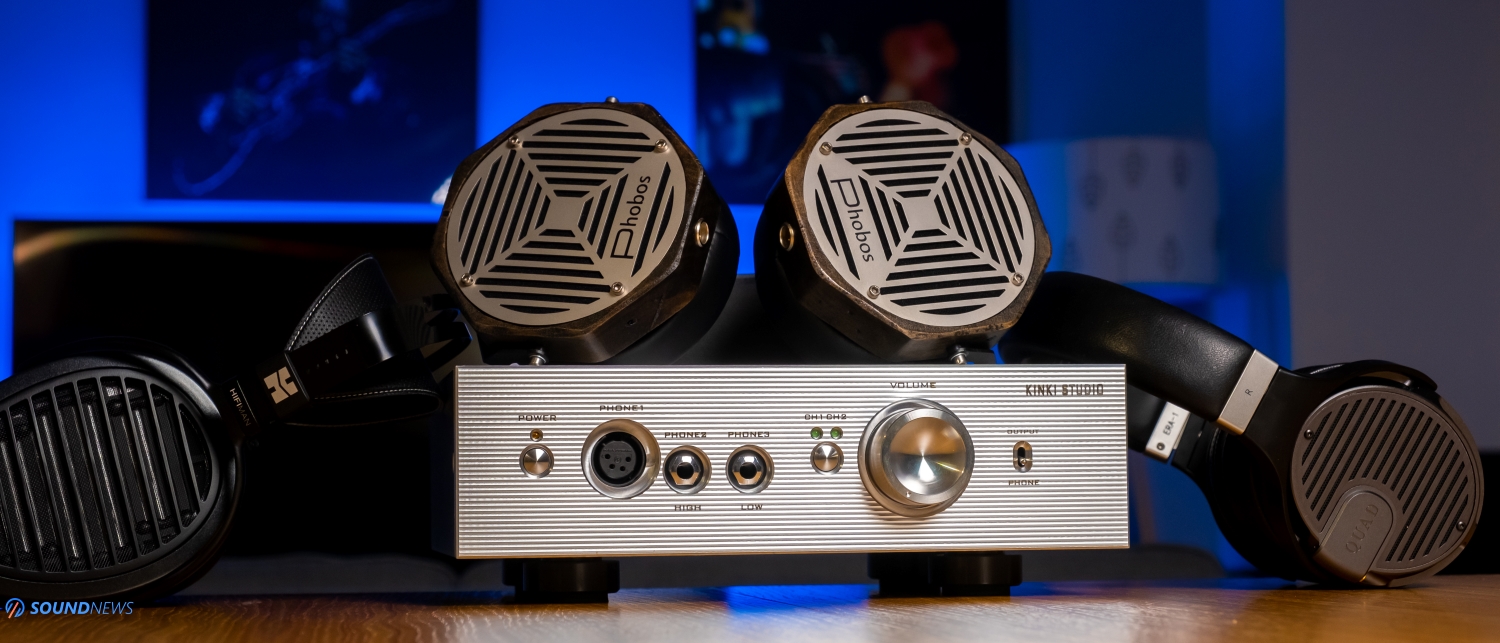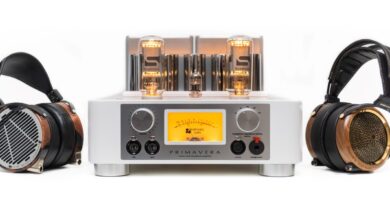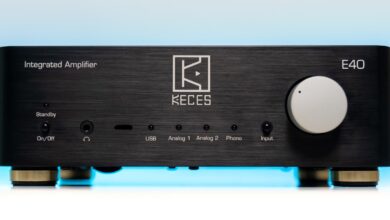Kinki Studio Vision THR-1 Review – A Gentle Giant
My Video Review:
There is a lot of talk lately about a Chinese company called Kinki Studio – yes, that is exactly their name. I already imagined how a guy enters a media company that specializes in business names and just casually asks around: “Hey, we came from China, we have a studio and we would like to have a kinky name that would appeal to a new generation of audiophiles, any ideas”? And that is how Kinki Studio came to be. Kinki Studio is quite funny (in a good way), after receiving their Vision THR-1 and before powering it on, it was mandatory checking the user manual first and I was immediately struck by their great sense of humor.
I will show you just few examples, in the instruction manual, they described that THR-1 is coming in the package with an el cheapo power cord, that is really funny, I hate those el cheapo black power cables as well and I bought instead…blue power cables, much better ones. Later on, in the manual, while explaining about DC Voltage Output they go like this: “If the matching upstream source device is poorly designed or defective (usually a vacuum tube device), the headphone may be damaged.” Being a solid-state guy, I find this statement very funny. I already like this team a lot, I would shake their hand right now if I could.
All jokes aside, Kinki Studio is very serious about their gear, about their meticulous part selection (they are quite obsessive about this), about their casing and looks, you can feel that only by looking at their gear.
Kinki is not really new, founded in 2008 and being dedicated to design and manufacturing of high-quality audio equipment. Their core design philosophy is to reproduce the sound to its original recording intent and avoid distortion caused by excessive rendering. They gathered media attention about one year ago and ever since their gear is popping here and everywhere and that made me really curious.
A Vision THR-1 was prepared for the European media tour and I decided to give it a proper listen.
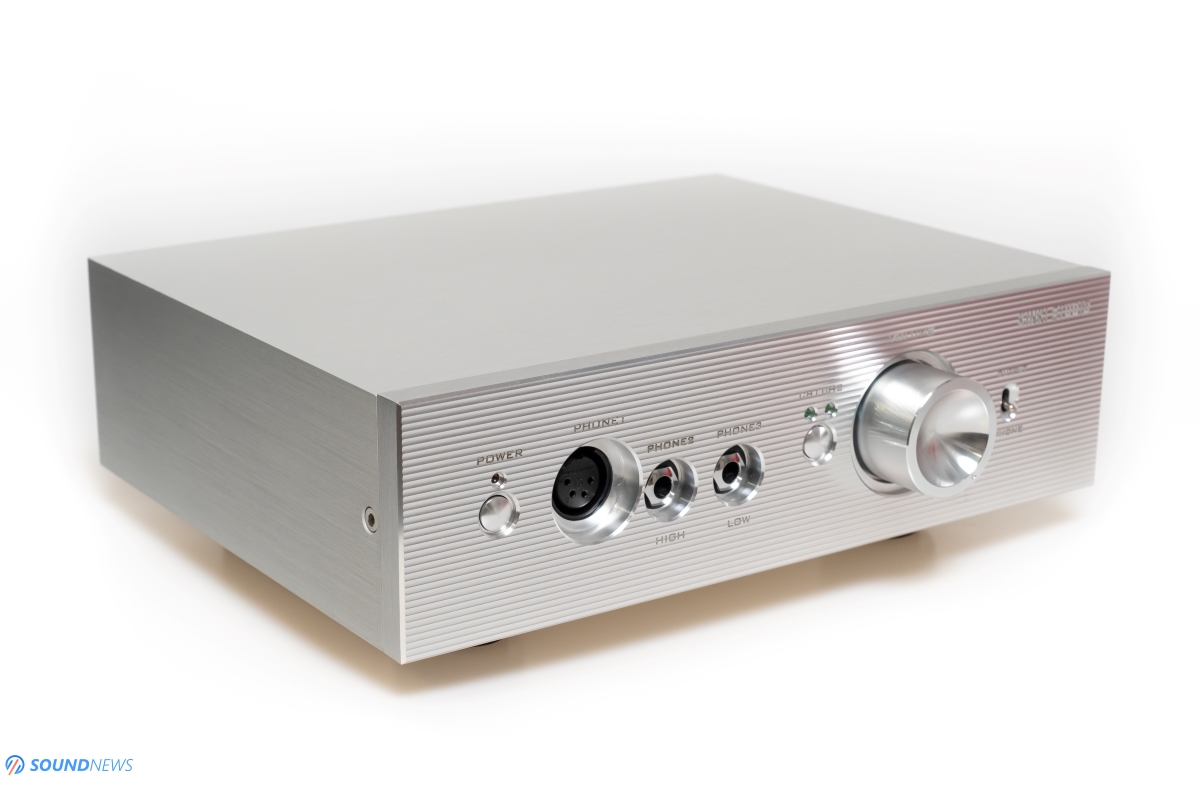
Inside the Box
Box is fairly small but surprisingly heavy. As with all high-quality audio components, it is coming double boxed and the product box is full with lots of foam for protection. Inside you will find an instruction manual, a power cable and the THR-1 unit itself. There is an error in the manual stating that a remote control should be found in the package but that is not the case and it will be addressed soon.
Design & Build Quality
First impression that I had is that THR-1 is built like a tank, with a serious industrial look and being much heavier that it might look. I mean it has almost the same size with Aune Audio S7 PRO and yet it is twice as heavy. If those headphone sockets would not be as obvious on the front, I would think this is an integrated amplifier.
The front and the top panels are really thick, at 11mm thickness, milled on a CNC machine, THR-1 looks more like a faraday cage than like a headphone amplifier. The front panel has an interesting wave pattern that plays with the light in the room. I personally like the huge all metal volume knob, I like that it turns really smooth and offers a pleasant mechanical resistance. On the front panel there is a simple On/Off button, an input selector (CH1 or CH2) and a switch that changes between the pre-amp out or the headphone output. It offers 3 headphone outputs; one is a 4-pin XLR balanced one and two are single ended ones. The two SE 6.35mm (1/4”) headphone sockets are labeled as High and Low. High is recommended for high impedance headphones offering double the power to the Low output socket.
On the back plate there is an AC inlet, two analog inputs, a single ended RCA, a balanced XLR input and also a balanced pre-amp output, lovely! Both RCA and XLR sockets seems to be high quality ones and the XLR input socket is a locking type, great!
Do note that THR-1 is not having an universal power supply inside, it is either an AC110 or AC230 unit, so be careful when you order one. THR-1 is also protected by a slow blow fuse, rated at 2A that can be easily replaced by the end-user.
THR-1 is offered only in anodized aluminum look, there isn’t a back in black unit, but I think the anodizing process added a right amount of scratch resistance. I put several headphones on top of the unit and the surface is still free of any signs of wear.
Overall, I think it looks cool and very solid as a (metal) brick.
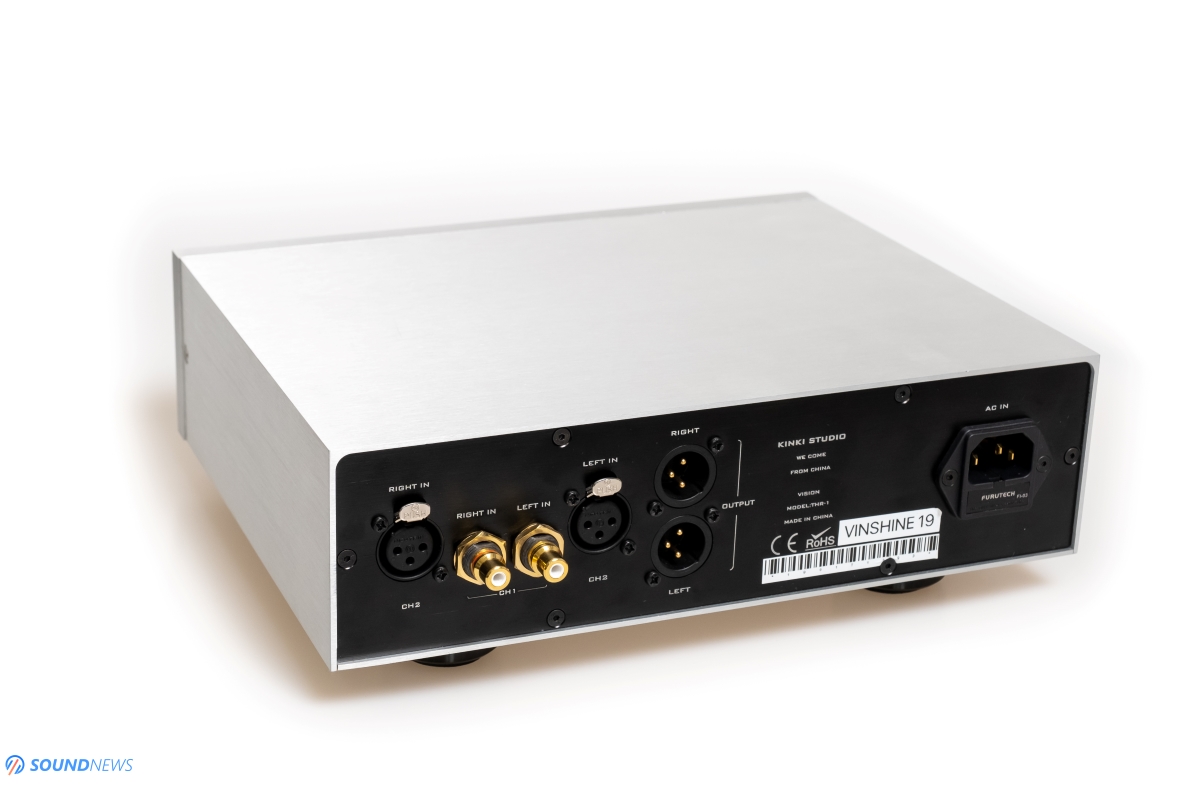
Tech Specs & Detailed info
THR-1 is a very wide bandwidth headphone amplifier with a 20 to 300 kHz frequency response that goes beyond human hearing. Output voltage is at a crazy +/-70 VAC and if you wondering how much that would be in watts, THR-1 is outputting on the 4-pin XLR and on the High 6.35mm socket up to 28W in 8 Ω, 7 W in 30 Ω, 2.2W in 300 Ω and 1.3 W in 600 Ω and half that power on the Low 6.35 mm socket. That is an amazing power rating and I am pretty sure that it could even drive passive speakers if it had speaker taps on the back.
I actually opened it up to see all the magic unfolding and was pleased to find an all-discrete design, 4 EXICON mosfets, some huge KEMET power banks, a very advanced ultra-low-noise power supply made from a toroidal transformer and of with another power transformer. This is the sole reason Kinki Studio is recommending a 300-hour burn-in, those big caps and both transformers need time in settling down.
I see that it uses a single ended Alps Blue-Velvet volume potentiometer, meaning that the internal circuitry is not fully balanced. Nonetheless, with a bunch of high-power mosfets, all discrete design and a very advanced power supply and filtering, I see a big potential in this one.
THR-1 is having a clever protection circuit that will save the drivers on your headphone, if you go really loud and really fast, it will cut out the signal and the power will stop flowing, go lower with your volume and it will start playing again. I tested this feature with some el cheapo headphones and it worked wonderfully. THR-1 will protect your precious headphones and in this regard, it works a lot like the $3000 Benchmark HPA4.
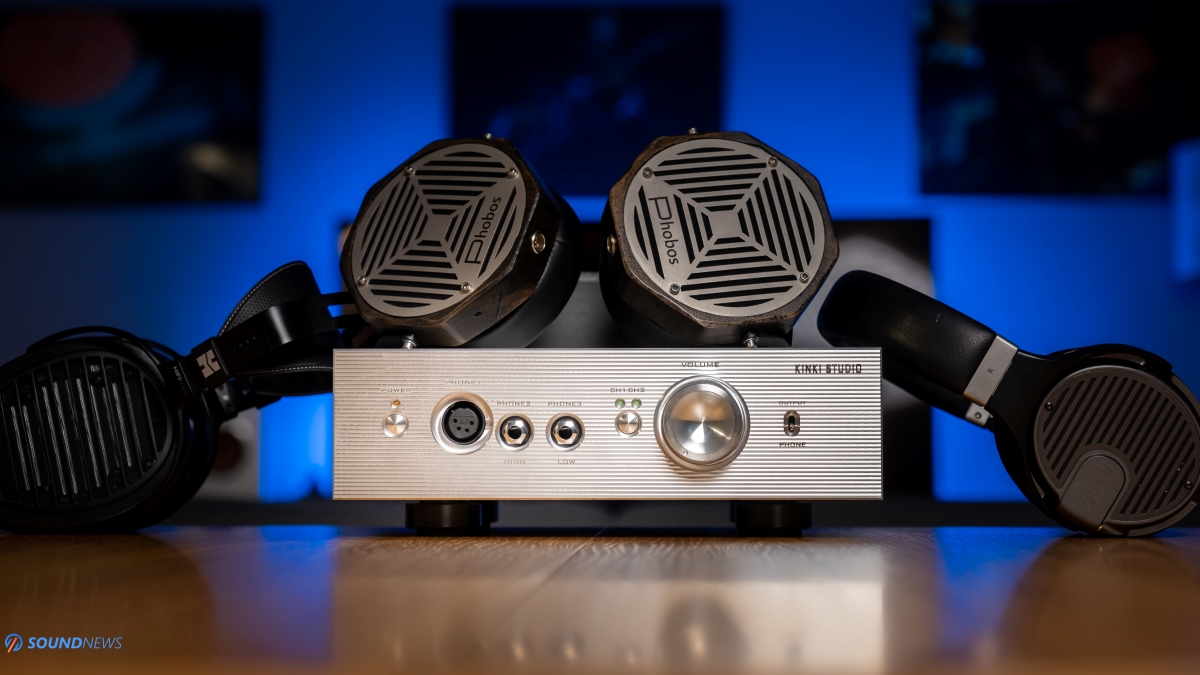
Test Equipment
To fully understand the sound signature of Vision THR-1, I first tested it with my Matrix Element X which I am very accustomed to, then I tried it with a Topping D90 DAC, mostly because I wanted to check if an increase in perceivable soundstage will have an impact on THR-1 sound. Later on, I tried it with KECES S3, I was curious if an extra crispy treble detail of S3 will be rendered on THR-1.
As for headphones, THR-1 was tested with ultra-sensitive IEMs as FiiO FH7, Moondrop Starfield, Simgot EN700 Pro, with portable headphones as Sennheiser Momentum 2, Meze 99 Classics, with desktop dynamic headphones as Sennheiser HD660S and with heavy weight planar-magnetic headphones as Erzetich Phobos, Hifiman Arya and Quad Era-1. The task ahead was clear, but let’s see if mission would be accomplished.
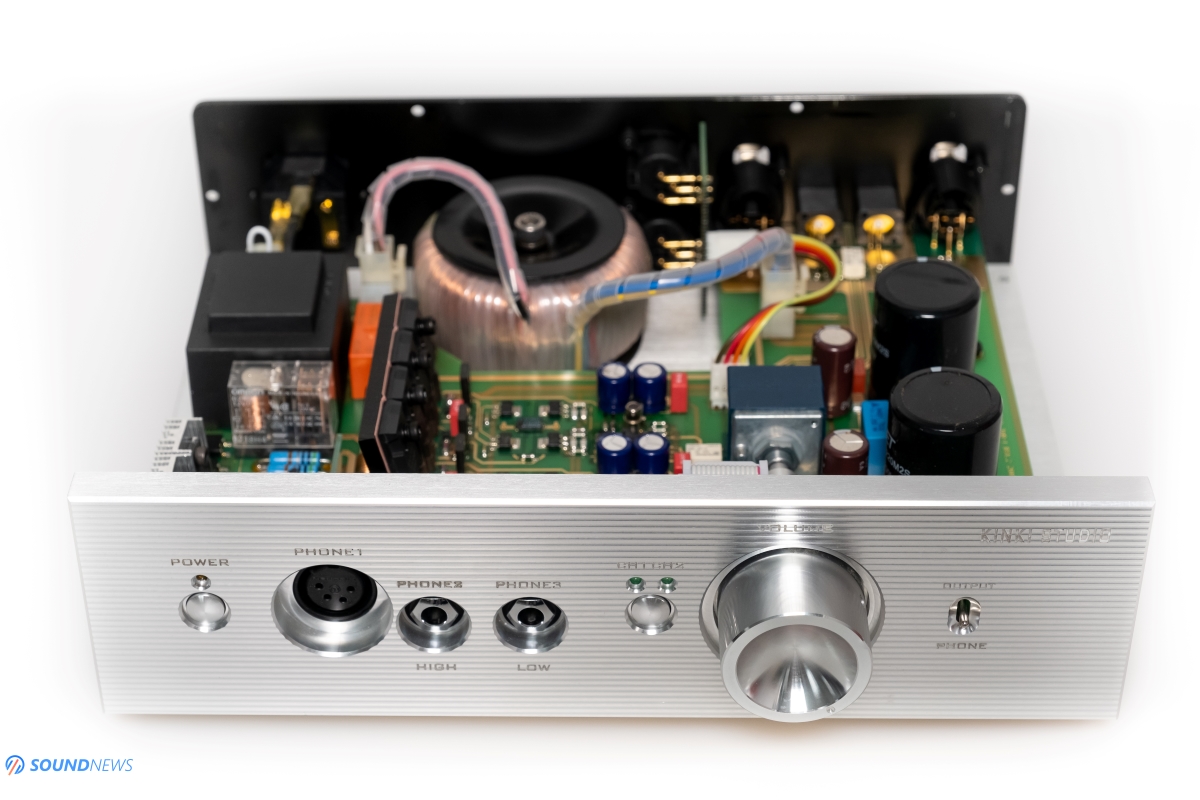
Sound Performance
I. Burn-in requirements
Being curious by nature, after unboxing it, I plugged it in and immediately started listening to my favorite tunes. In the next minute I was already sending an email asking if the unit was burned-in or not, because it sounded like a defective unit with very shy dynamics and in general it was very slow sounding by my standards. It was brand new, so the recommended 300-hour burn-in mark was very far away. I am burning it in since the middle of December and between me and you, this is the only headphone amp I have tested where I felt a huge sonic difference from brand-new to burned-in.
There is another thing that plays a big role, if you turning off all your gear before going to bed, in the morning THR-1 will need something between 20 to 45 minutes of warm-up to sound at its best. After the case gets warm to the touch and internal electronics are reaching 40 degrees Celsius, THR-1 will start showing-off all its best tricks on you. I felt that too, the warm-up is mandatory, otherwise dynamics will be weaker and the stage will be more up-front. I also observed that it enters in the protection mode much faster if it was just powered On and it’s cold to the touch.
Few weeks later and I started smiling while listening to it, it takes a bit of time to understand and love it but when that happens, there is no going back.
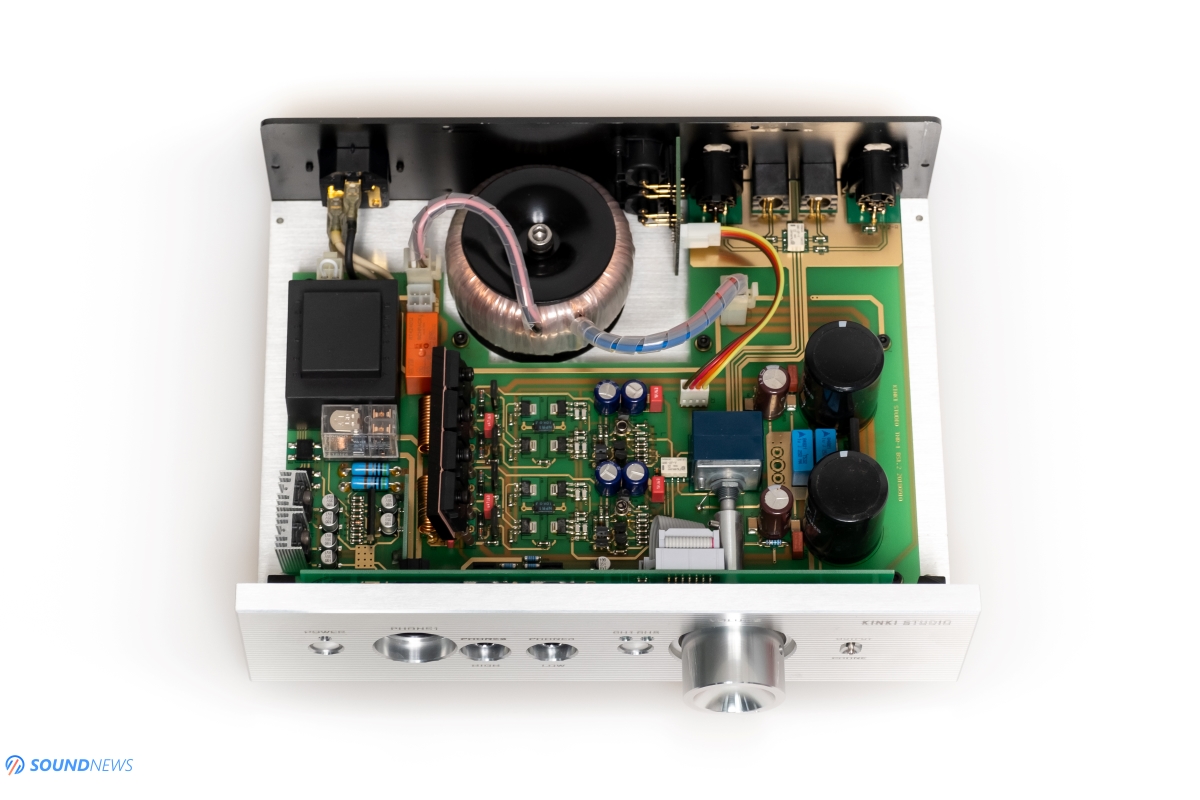
II. Sound Signature
THR-1 is quite a bit different sounding comparing to other headphone amps I was playing with of late. My unit of choice right now is an ultra linear sounding unit that doesn’t stretch-out to infinite in terms of soundstage, I’m talking about the HPA4 by Benchmark. By comparison, THR-1 is adding a layer of refinement, of listening pleasure, it sounds clearly fuller, meatier and carries just more emotion with every tune I would listen to. THR-1 is having an unusual feeling of easiness, of freedom, somehow like driving a Ferrari with 60 km per hour, you just feel that power underneath its hood. In general, tube-based amplifiers will throw a bigger soundstage with a lot more air in the room, solid state electronics will have other traits like a much better driver control, much lower distortion numbers and the later ones will sound clearer most of the time. THR-1 is an all discrete solid-state amplifier with all its pros, but with a soundstage that is very reminiscent of tube-amplifiers. It throws it big and it throws it far and wide. THR-1 will somehow absorb you in the middle and let you decide to which musical note you would like to listen, weird at first, but really cool later on.
Power wise, THR-1 is really impressive and the only headphone amp I tested, that can challenge it in terms of power output is the $1800 Burson Conductor 3 Reference. THR-1 is really effortless sounding, it can drive any headphone you own with authority and ultimate control. It has such a huge power reserve that it could drive 3 headphones at the same time. For fun, I connected 3 power-hungry planar headphones at the same time and I could even go past my comfortable listening level and it would still have some power left in its veins. Planar headphones are mostly current driven and are putting a heavy burden on some headphone amplifiers, yet THR-1 with that robust power reserve offered a great slam, impressive dynamics and always kept going on and on.
All in all, Vision THR-1 possesses an incredible fluidity and acoustic tonality, it sounds so effortless and life-like that sometimes I am turning my head checking if someone entered my office.
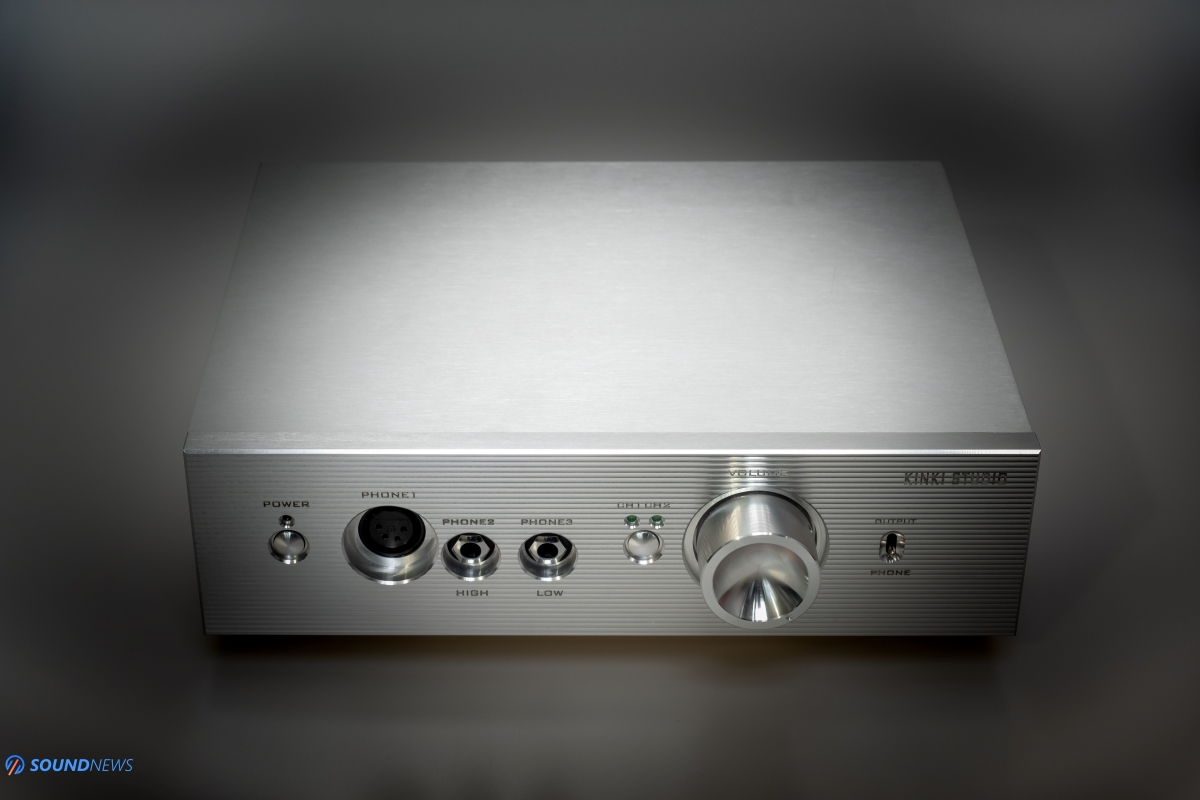
III. Resolution & Transparency
With a double-filtered power supply like that, you can bet THR-1 will sound transparent and bug-free. THR-1 impressed me more with its transparency and I am sure, that big and wide soundstage played a big role here. I am just passing by every note quite easily and nothing stands in my way. I like a lot that THR-1 is really grain free and the road ahead to music is smooth, straight and free of any potholes.
I do use two passive power conditioners in my office, because they did a huge difference with some DACs that are using switching power supplies (Benchmark DAC3 and Mytek Brooklyn DAC+ are very good examples), however those two did nothing good to Vision THR-1. That tells me a lot of how good is the power supply implementation and its noise rejection. Grain free, transparent and easy going are some core attributes of this unit.
However, I will say that in terms of resolution it is not on the same level with the $3000 HPA4 but that is understandable considering its price point. Resolution wise, it is great and it can show tiny air movements in the room, you can hear those micro-details but you will need more time searching for them.
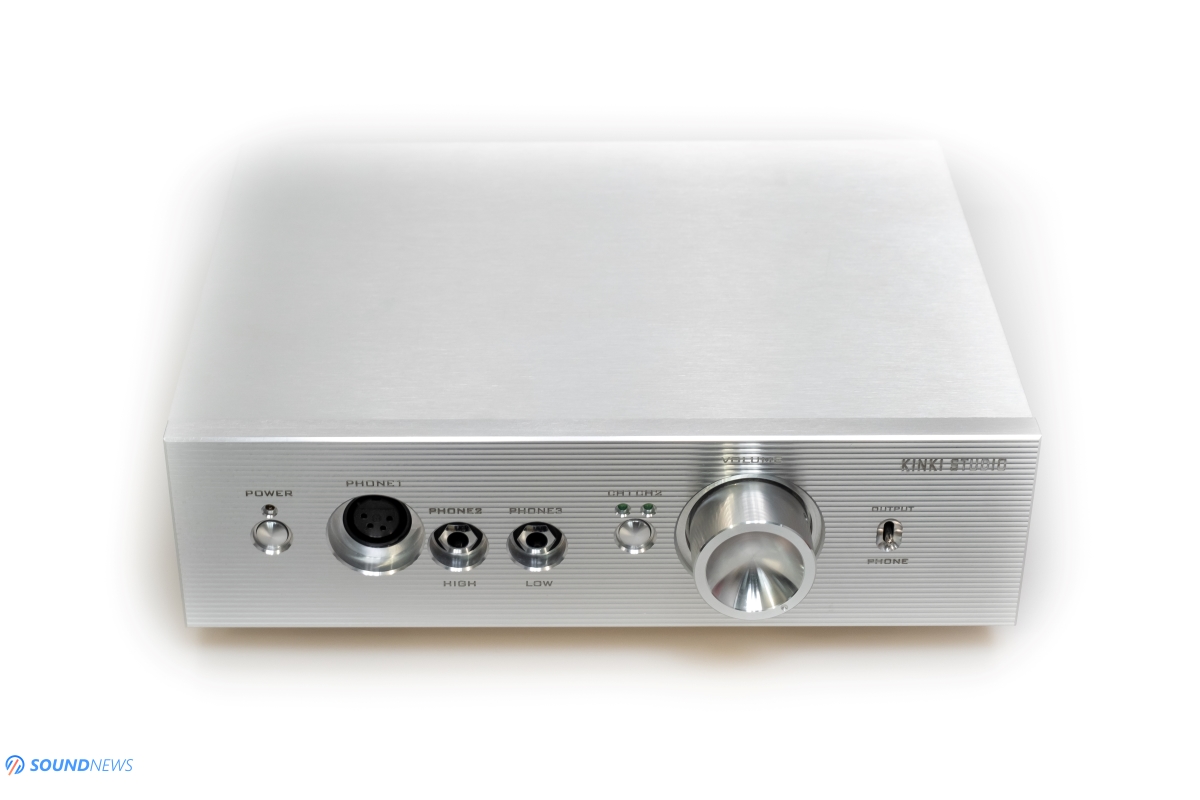
IV. Transient Response
Those high-power mostfets and its main circuitry were designed for a very wide-band frequency response and for a great power reserve. The headphone drivers, be it dynamic, or planar, will draw the current and voltage they need with nothing standing in their way. After being warmed-up to the recommended temperature, THR-1 becomes fast sounding, hitting with just the right amount of sound pressure level (SPL) without becoming tiresome in the long run.
If you want to have a faster transient response, please never attach it to an active or passive power conditioner. Those will slow it down, it already has 2 transformers inside, another one or two will hurt its speed and impact.
I have observed that with THR-1 I can listen to music for a longer period of time comparing to my HPA4 without experiencing listening fatigue. HPA4 is always fast and restless sounding, THR-1 on the other hand will sound fast only if the music is calling for it. Otherwise it will have a smoother and gentler tone without pushing too much air into the ear-drums. If I am putting some faster paced music like electronica or rock, suddenly THR-1 becomes nimble and light on its feet and kicking with the right amount of impact. Listen to some B.B. King or Dave Brubeck and you’ll feel how it’s hitting the brakes, giving a mellower performance and putting you in a relaxed state of mind.
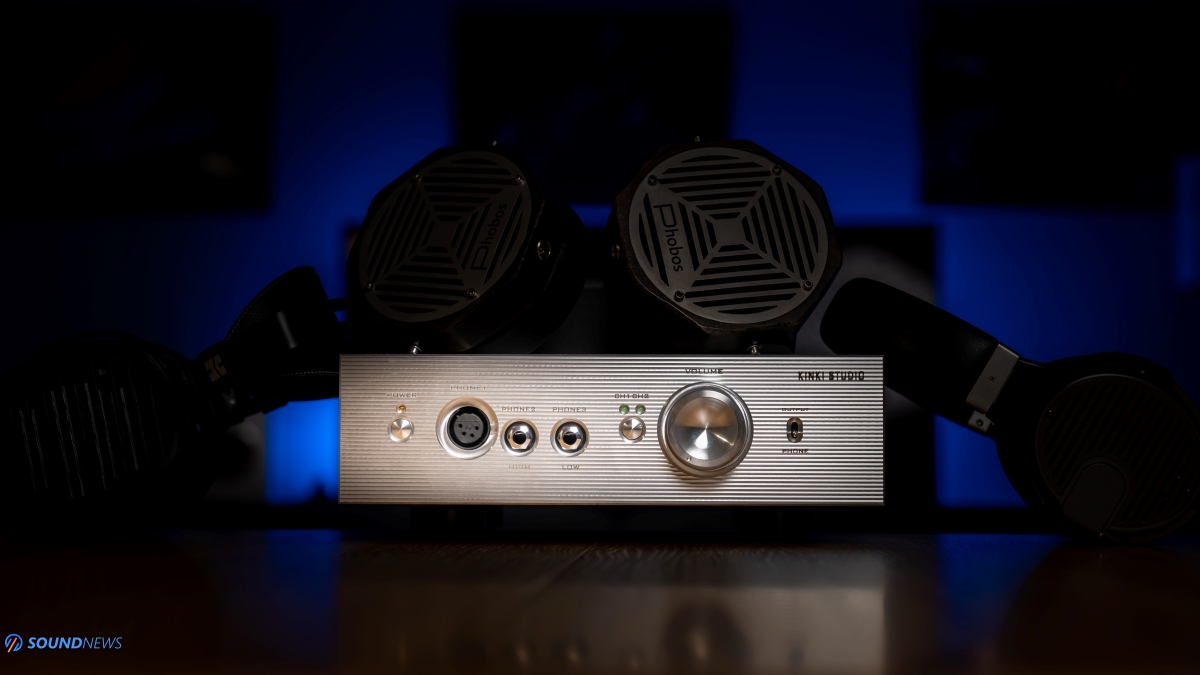
V. Background Noise & Harmonic Distortion
This is where THR-1 shines brighter than other units. Again, that advanced power supply and the almost limitless amount of power makes it free of any gremlins from your power lines. It has a really black background, if you use the right headphone socket. The headphone socket marked with Low should really be used only with low impedance headphones and with high sensitivity ones.
It is not advisable using ultra-sensitive in-ear-monitors, but the sake of it, I needed to test them too. Be gentle with that volume pot, because all IEMs from my stable at 9 o’clock position and on the Low output were already quite loud and at 10 o’clock it would be just too loud for me. I was really glad that background noise was nowhere to be found, so it doesn’t have ground loops, it sounds really clean and free of any hums. I paused my music and at around 4 o’clock position there was a bit of hum, but at that volume position I would go deaf in an instant if I would press play. So, I’m glad to report that THR-1 worked great with sensitive IEMs, just make sure to be on Low headphone socket.
On the balanced and on the High output sockets, IEMs shown a very low intensity hum, very silent but present all the time. Switching to high-impedance headphones or to planar magnetic ones, that hum goes completely away and I never spotted it again. Even my 20 Ohm Quad Era-1 can’t spot anything even past my comfortable listening level so I have really nothing to complain.
In terms of distortion, since it has gobs of power to spare, I never actually stressed it enough in the clipping region so it is really free of distortion, even at very loud volume levels. Take that protection circuit at play and you can be sure you’ll never overdrive your headphones, so harmonic distortion become just a non-issue anymore.
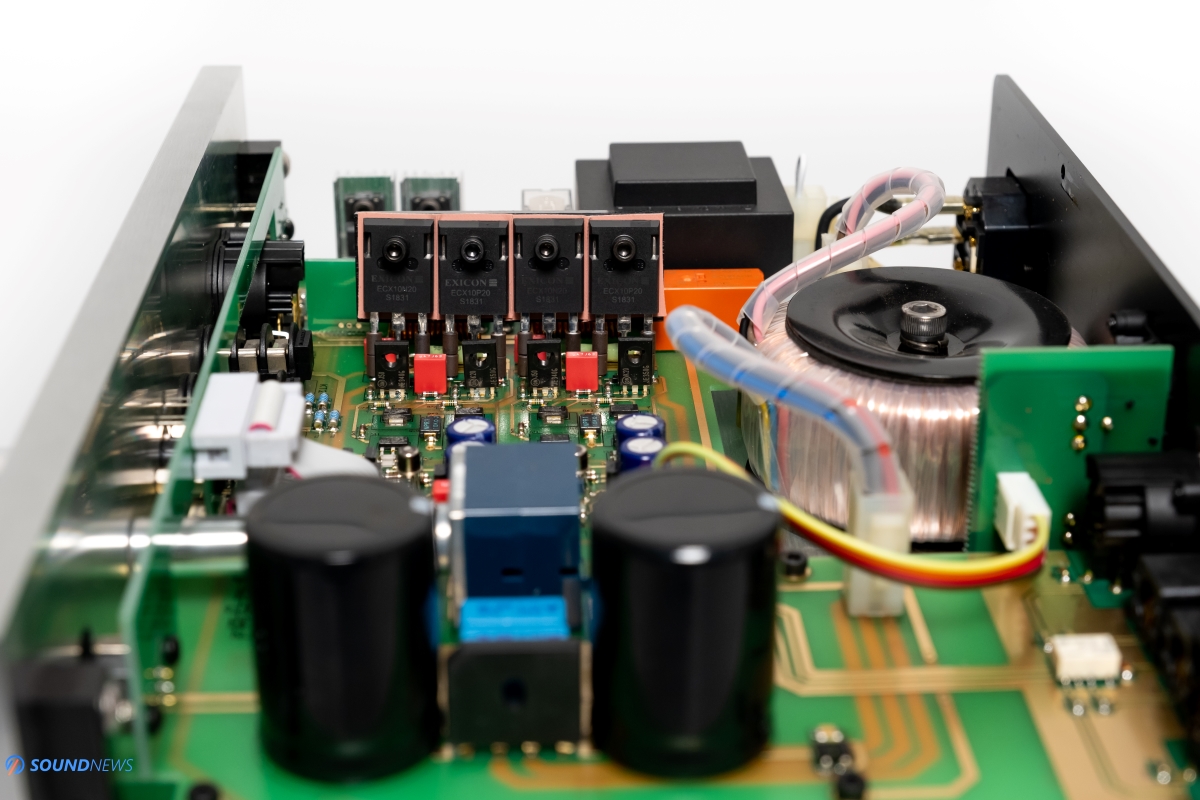
VI. Soundstage & Depth
This is the place where THR-1 feels at home, staying in a very comfortable position. Out of solid-state headphone amps that I have reviewed of late, only Aune Audio S7 Pro, Burson Conductor 3 and the Vision THR-1 can throw a wide stage and be proud about it. I still think that THR-1 throws it wider than the rest in all directions, but you will need a higher performance headphone to hear that for yourself. I felt a bigger stage only with Erzetich Phobos and Hifiman Arya and with other headphones I was mostly guessing. Depth is great too and I while listening even to some regular CD quality tunes and encoding them to DSD in JRiver Media Center, it surprised me than even crowded passages started sounding uncluttered and farther away from me.
Listening on the High and 4-pin balanced outputs made me realize that stage is becoming bigger but still with a centered and focused image, it is wide, tall and deep, so basically all axes took advantage of the extra power.
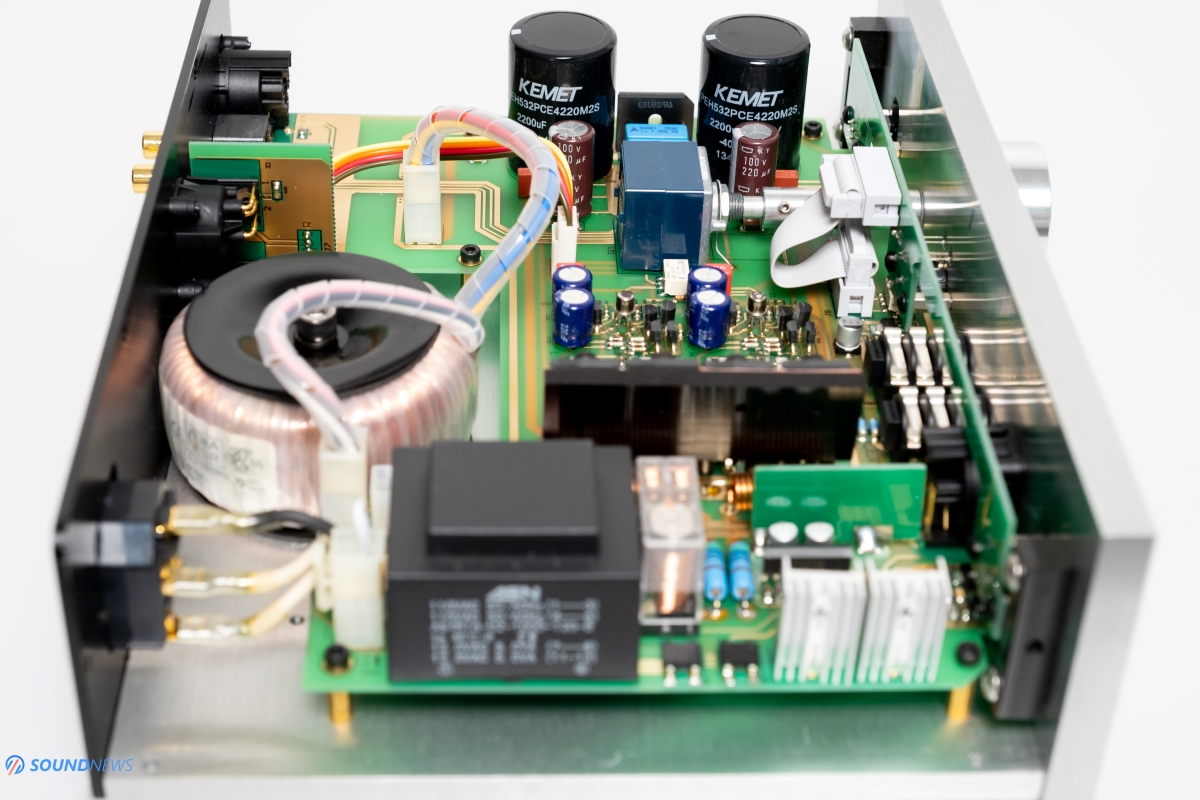
VII. Frequency Response
Being a super-wide bandwidth amplifier means it will have an extended frequency response. I will just mention that I feel its mid-bass and midrange are enhanced by a hair, but I don’t think this was made on purpose by their designers. In general, well-made all discrete designs are sounding fuller, meatier and more natural thanks to that oversized PSU and powerful output stage. It will go low, it will rumble in the bass, it will have a great sustain if the track is asking for this. Midrange will be smoother, more believable, a bit heavier sounding too. It has a great tonal balance and it is against those modern V-shaped sound signatures, I still don’t get those.
Treble is extended, is clear and textured, but it will never sound metallic, bright or harsh. It is putting a lower stress on the listener and this is why I can listen to it for hours and hours without feeling dizzy or tired. I don’t find it rolled-off, just smoother sounding without over-sharpened images.
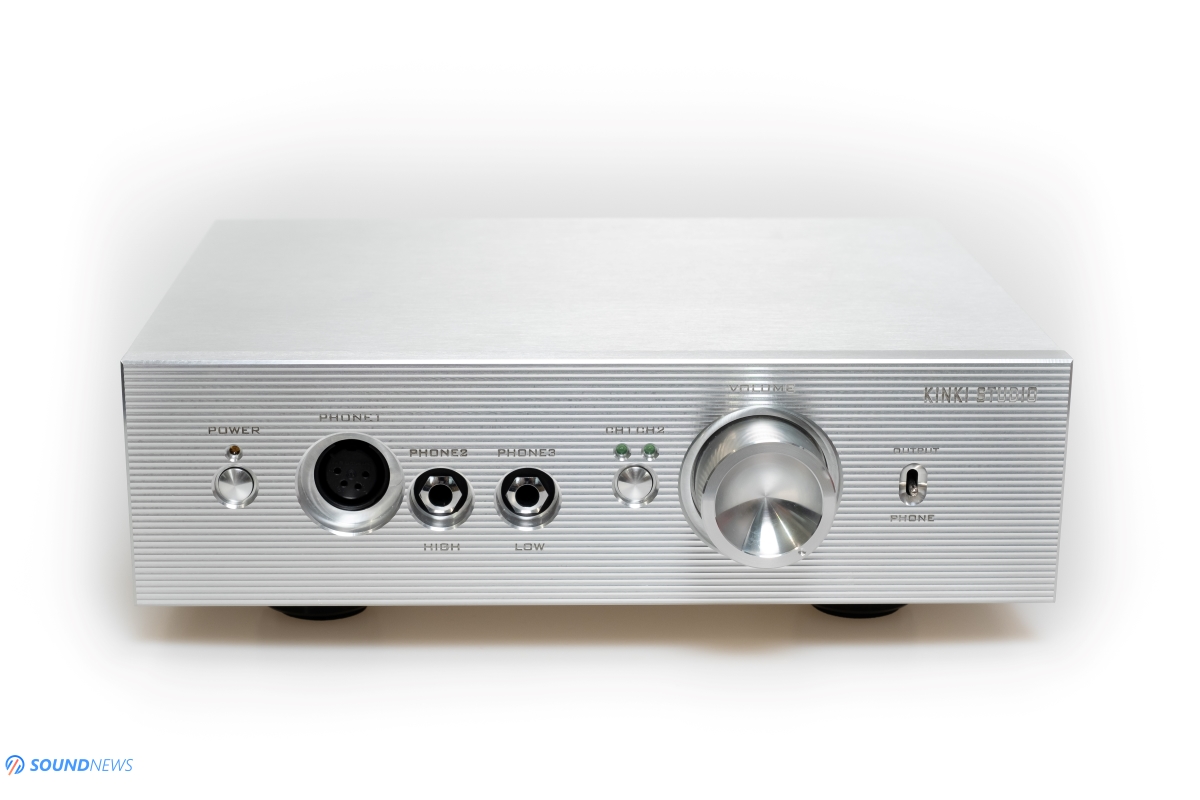
VIII. Power Output
If you check its specs again, you will observe that it can pump a lot of power even for high impedance loads, at 600 Ohms it gives 1.3 Watts and that is really a lot of power. My reference HPA4 is less powerful and everything I have tested except for Burson Conductor 3 will be weaker power wise. Some particular headphone amps are favoring only lower impedance headphones, OTL amps are favoring only very high impedance headphones. Vision THR-1, on the other hand is great for both, be it super low or super high impedance, ultra-sensitive or very hard to drive. Its robust output stage will move those drivers with a strong grip offering an effortless presentation to the listener. In all honesty, all headphones from my stable worked wonderfully with it and I don’t imagine a current production headphone that can’t be powered by it. Its output stage looks more like an integrated amplifier to me, I don’t see it struggling with anything really. There is a reason Kinki Studio put a protection circuit inside it, right?
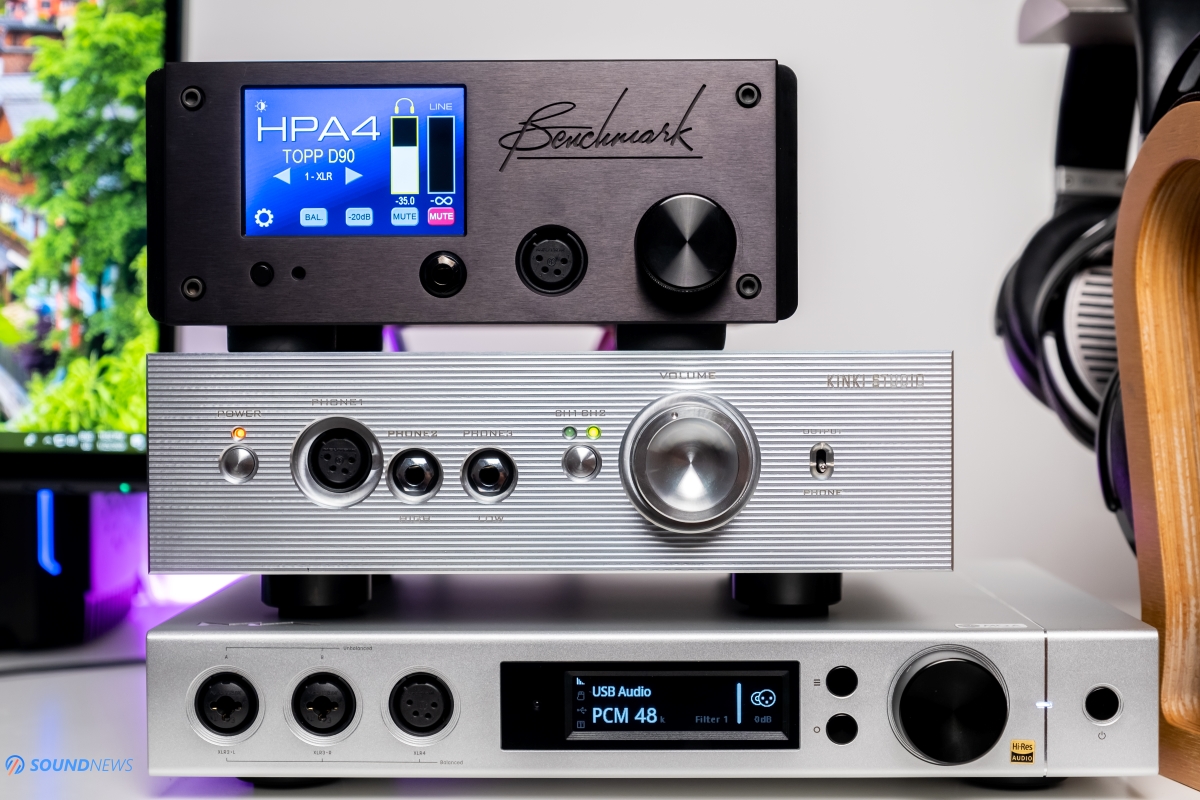
IX. An interesting comparison
Some of you are curious how it will fare against the HPA4 by Benchmark, does it have a chance against it at almost 1/3 of its price? Let’s find out.
Kinki Studio Vision THR-1 ($1098) VS Benchmark HPA4 ($3000)
In terms of build quality, I have nothing to reproach and both units are built to very high standards. Apart from being headphone amps, both can work as line-stage too, but I will give more credit to HPA4 because it has a remote control, a super intuitive touch screen and it has way more inputs and outputs on the back.
THR-1 is considerably bigger and heavier, has a bigger power supply too and as a result offers more power on tap. That’s right, THR-1 is more powerful and can drive a wider range of headphones compared to HPA4. I am pretty sure THR-1 will drive a pair of Hifiman Susvara, but I am not sure HPA4 can do that too with some headroom left.
THR-1 has a bit of bloom in the mid-bass and midrange area, that makes everything sounding full-bodied, natural, carrying more weight with every note. THR-1 is also smoother sounding, it is easy going and lacks any listening fatigue in the long run. HPA4 by comparison is colorless, without a sound signature, with it you will be listening to your source and nothing more, it’s more honest, but attach it to a hotter sounding source and you’re screwed. HPA4 will not hide anything from its path and will not make your music sound prettier. As you can see, it has quite a different approach to music reproduction. As a reviewer, I need a tool that will show me everything what’s in there and I feel that HPA4 offers me more of that.
On the other hand, highlighting all the defects of the downstream equipment and of the recording is tiresome in the long run and makes some of your older tunes almost unlistenable.
In terms of soundstage and depth, I will congratulate Vision THR-1 for a spread out, out of my head presentation and in this department it’s unbeatable. HPA4 sounds closer to me, but with sharper and clearer images, I can see a clearer shape and outline of them.
In terms of distortion and background noise, HPA4 is a winner, I can go to loud levels with my IEMs without a single trace of hum or hiss, just a clear and really black background. THR-1 is not that far off and I still consider it clear sounding (if you use the right headphone socket).
All in all, THR-1 stood really well in front of the reference HPA4. I can’t really tell which one is better or worse because it depends a lot on the listener. Price wise, at almost a 1/3 of HPA4, THR-1 looks like an outstanding value
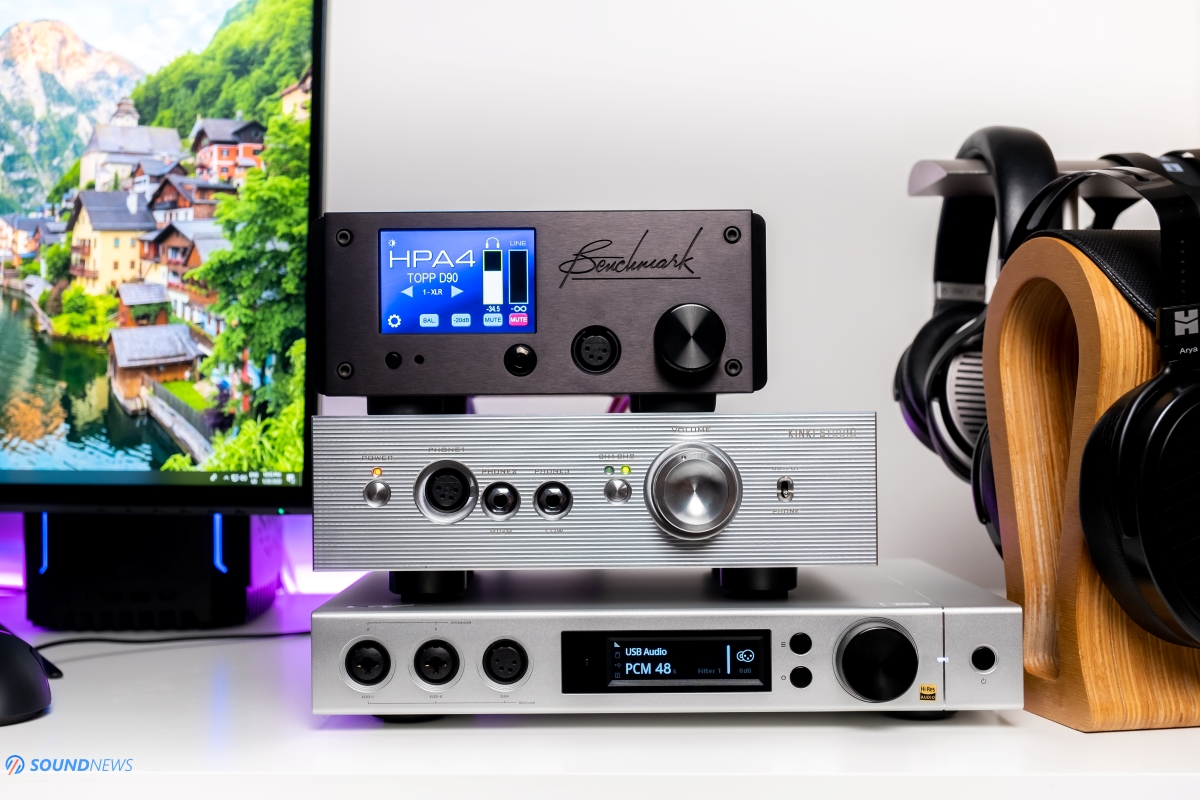
Conclusion
Disregarding all my jokes, Vision THR-1 came out as a really serious piece of kit, it is modern looking, built like a tank and has an affordable sticker attached to it considering all its pros.
It sounded impressive with IEMs, with dynamic headphones and with planar-magnetics alike so I consider it really versatile. If you look for a full-bodied sound, carrying a heavier tone, that is smooth, unoffensive and that can be listened for a very long session, then THR-1 is a logical recommendation. That hint of warmness, that effortless presentation made pairing and system matching a much easier task and it worked well even with hot sounding sources.
THR-1 also came out as a soundstage king, that reminded me a lot about good tube designs without their shortcomings.
Kinki Sudio Vision THR-1 can be purchased directly from their web-store by following this link or you can contact your local distributor for one.
PROS:
- Solid build quality, it’s built like a tank in a thick Faraday cage that doubles as a giant heat-sink.
- Great tonal balance, always natural and weighty sounding
- Extended frequency response with a good transparency
- Sounds open wide on all axes, has an amazing depth too
- Very powerful output stage, can drive any headphone with authority
- Airy and big sounding all the time
- Smooth and easy going, non-aggressive approach
- Leans towards an engaging performance, adding color and nuance to your music
- Paired well with all my headphones from sensitive IEMs to big planars
CONS:
- Not the most linear sounding
- As a line-stage, a remote control is a must
ASSOCIATED EQUIPMENT:
- Sources: Xiaomi Mi9T Pro, Corsair One i160
- DACs: Matrix Audio Element X, Topping D90, KECES S3, Burson Conductor 3, Audio-GD D28.38
- DAPs: FiiO M11 PRO, Shanling Q1
- Headphone amps: Kinki Studio Vision THR-1, Benchmark HPA4
- Full-sized headphones: Erzetich Phobos, Hifiman Arya, Quad ERA-1, Sennheiser HD660S
- Portable headphones: Sennheiser Momentum 2, Momentum 3, Meze 99 Classics
- IEMs: FiiO FH7, Simgot EN700 PRO, Moondrop Starfield
- Loudspeakers: KEF LS50W
- Interconnects: QED Reference XLR, Aune AL3 XLR
- Power Cables: Isotek EVO3 Premier (x2)
- Balanced Power Conditioners: PLiXiR Elite BAC 400, KECES BP-600
